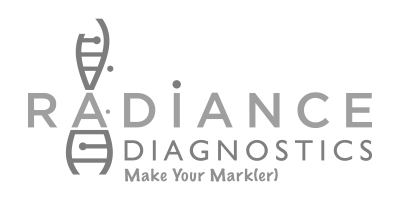Description
HCG Blood Test – Quantitative
A quantitative human chorionic gonadotropin (HCG or hCG) blood test measures the specific level of HCG in the blood. HCG is a hormone produced in the body during pregnancy.
Other HCG tests include:
- HCG urine test
- HCG blood test — qualitative
- How the Test is Performed
A blood sample is needed. This is most often taken from a vein. The procedure is called a venipuncture.
How to Prepare for the Test
No special preparation is needed.
How the Test will Feel
When the needle is inserted to draw blood, some people feel moderate pain. Others feel only a prick or stinging sensation. Afterward, there may be some throbbing.
Why the Test is Performed
HCG appears in the blood and urine of pregnant women as early as 10 days after conception. Quantitative HCG measurement helps determine the exact age of the fetus. It can also assist in the diagnosis of abnormal pregnancies, such as ectopic pregnancies, molar pregnancies, and possible miscarriages. It is also used as part of a screening test for Down syndrome.
This test is also done to diagnose abnormal conditions not related to pregnancy that can raise HCG level.
Normal Results
Results are given in milli-international units per milliliter (mUI/mL).
Normal levels are found in:
- Non-pregnant women: less than 5 mIU/mL
- Healthy men: less than 2 mIU/mL
In pregnancy, HCG level rises rapidly during the first trimester and then declines slightly. The expected HCG ranges in pregnant women are based on the length of the pregnancy.
- 3 weeks: 5 – 72 mIU/mL
- 4 weeks: 10 -708 mIU/mL
- 5 weeks: 217 – 8,245 mIU/mL
- 6 weeks: 152 – 32,177 mIU/mL
- 7 weeks: 4,059 – 153,767 mIU/mL
- 8 weeks: 31,366 – 149,094 mIU/mL
- 9 weeks: 59,109 – 135,901 mIU/mL
- 10 weeks: 44,186 – 170,409 mIU/mL
- 12 weeks: 27,107 – 201,165 mIU/mL
- 14 weeks: 24,302 – 93,646 mIU/mL
- 15 weeks: 12,540 – 69,747 mIU/mL
- 16 weeks: 8,904 – 55,332 mIU/mL
- 17 weeks: 8,240 – 51,793 mIU/mL
- 18 weeks: 9,649 – 55,271 mIU/mL
Normal value ranges may vary slightly among different laboratories. Talk to your healthcare provider about the meaning of your specific test result.
Higher than normal level may indicate:
- More than one fetus, for example, twins or triplets
- Choriocarcinoma of the uterus
- Hydatidiform mole of the uterus
- Ovarian cancer
- Testicular cancer (in men)
- During pregnancy, lower than normal levels based on the gestational age may indicate:
- Fetal death
- Incomplete miscarriage
- Threatened spontaneous abortion (miscarriage)
- Ectopic pregnancy
Risks
Risks of having blood drawn are slight, but may include:
- Excessive bleeding
- Fainting or feeling lightheaded
- Blood accumulating under the skin (hematoma)
- Infection (a slight risk any time the skin is broken)
Alternative Names
Serial beta HCG; Repeat quantitative beta HCG; Human chorionic gonadotropin blood test – quantitative; Beta-HCG blood test – quantitative; Pregnancy test – blood – quantitative
Source: MedlinePlus, National Library of Medicine
MedlinePlus brings together authoritative health information from the National Library of Medicine (NLM), the National Institutes of Health (NIH), and other government agencies and health-related organizations


